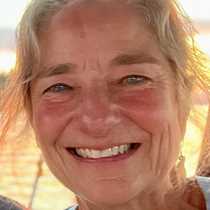Astoria
At 7:00 a.m. the National Geographic Sea Bird was within sight of the Columbia River bar, a place that is famous for its treacherous conditions, and the hundreds of shipwrecks and lives it has claimed over the centuries. Our ship was near Cape Disappointment, but we turned around and headed towards Astoria before reaching any rough sea conditions. We have traveled from Portland, up four locks of the Columbia and four locks of the Snake River; then turned around and came down those eight locks. Before breakfast we were nearly at the Pacific Ocean!
‘Ocian in view! O! the joy.’ – William Clark
We spent the first part of our morning exploring the Columbia River Maritime Museum. It has impressive displays featuring actual boats, and tells lively stories of dramatic rescues made by the Coast Guard during storm conditions at the river’s entrance. We all felt lucky we did not experience large waves this trip!
We then visited Fort Clatsop, where Lewis and Clark spent a very uncomfortable, wet winter, from December 1805 – late March 1806. We had a bit of that precipitation too, which lent our visit to the fort an air of authenticity. We did not, however, chew on rotten elk meat, as Lewis and Clark did! The coastal temperate rainforest trees – Sitka spruce, western hemlock, and western red cedar – are enormous evergreen trees, with bright green mosses covering their huge trunks. Some of us walked on a path by the water, protected by their overhanging branches. What a stark contrast to the arid, grassy landscape of a few days ago!
As we drove back into Astoria, we paused at the Astoria Column, a monument encircled by murals, which tell the history of the town. Following lunch, some of us went on an afternoon excursion to Cape Disappointment and to the Lewis and Clark Museum, while others explored Astoria independently. At recap, Ross read a beautiful poem he wrote about our voyage on the Columbia River.




